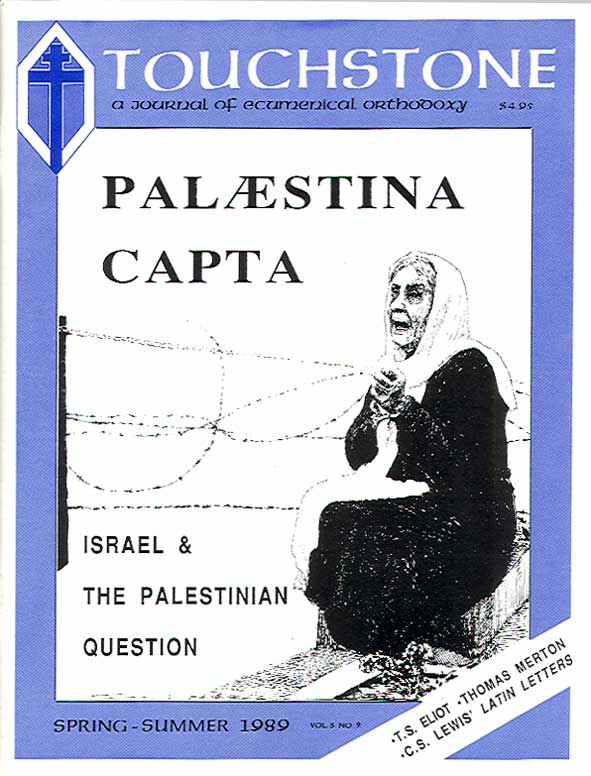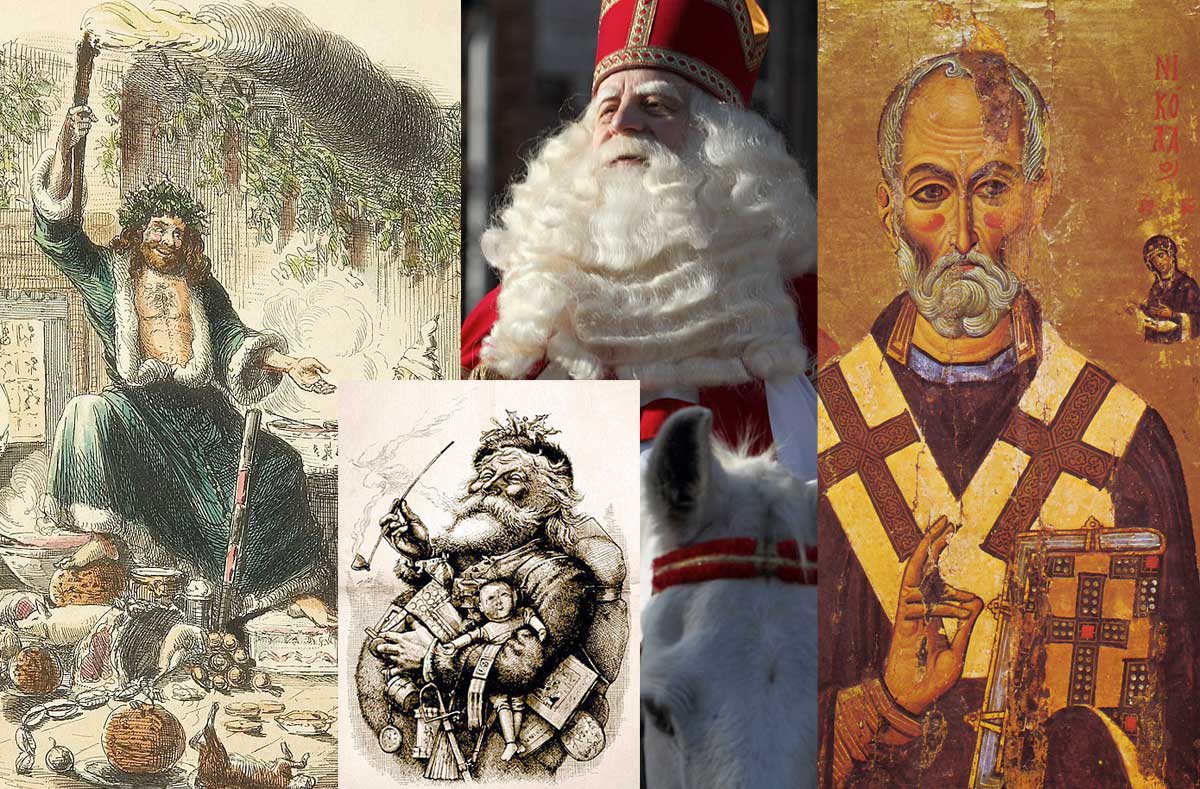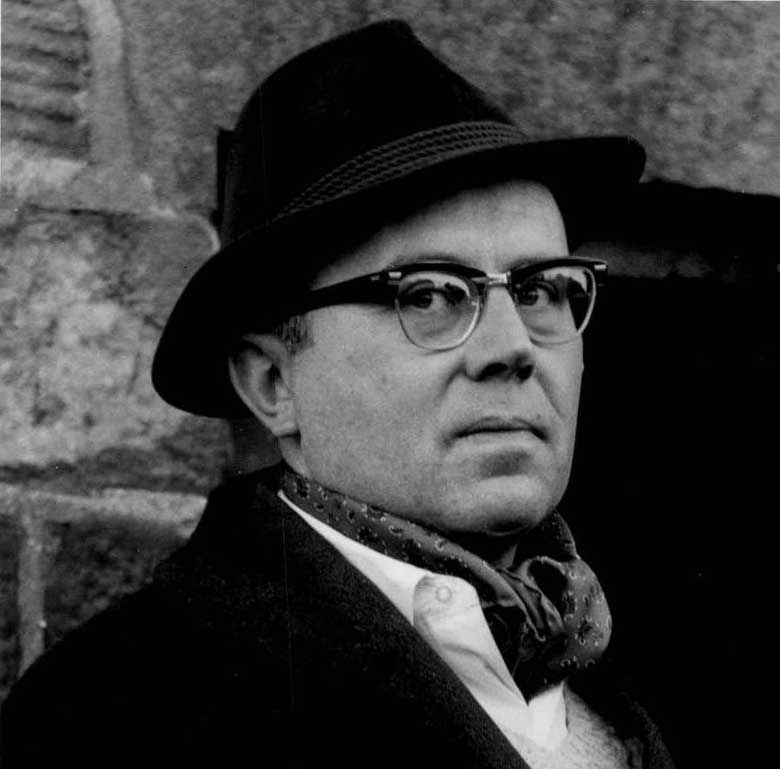Russian Orthodoxy
Encountering the Church Unknown
by Heinrich Stammler
It might strike you as odd, even paradoxical, when I designate the Russian Orthodox church as the Church Unknown at a moment in its history so fraught with significance and glory. The millennium of Christianity among the Eastern Slavs (the nations which we now call Great Russians, Byelorussians, and Ukrainians) has become a prominent topic in our press, not only in religious and scholarly books and periodicals, but also in the secular newspapers, journals, magazines and, of course, television. All these factors contribute to make this branch of Christendom better known in the minds of the people. Let us hope that these endeavors will prevent the Orthodox church from sinking again into oblivion.
Perhaps this danger can best be illustrated anecdotally. In 1925 the first ecumenical congress took place in Stockholm, inspired by the benevolent guidance of Sweden’s great churchman, Bishop Nathan Söderblom, whose mind and soul comprehended and embraced the entire Christendom in the spirit of charity, understanding, and forgiveness. Here, perhaps, for the first time in modern history since the Reformation, the Eastern Orthodox church became visible before the eyes of the world in the person of a number of hierarchs, bishops, and abbots, who took an active part in the deliberations. I still vividly remember the wonder with which the presence of these Eastern churchmen was noticed, surrounded as they then were by the halo of martyrdom, persecution, and enforced exile. It was as if one had encountered the body of one who had long lain in the grave and was now miraculously resurrected.
Another story, of a more humorous character, is lifted from the midst of everyday life. In the thirties there flourished in the city of Florence in Italy a small Orthodox parish mainly composed of Russian emigrés. They were spiritually nourished and guided by their pastor—let us call him Father Innocent—a typical old-style Russian batiushka (the classical Russian parish priest) of the best sort, good-natured, devout, kindly and outgoing, a thoroughly lovable man and priest. One day Fr. Innocent had to make a trip to Milan by rail. The train was crowded, and he found himself squeezed into a corner of the compartment with half a dozen or more Italian travellers. And since he was wearing his full clericals with pectoral cross, long hair and beard, he aroused much curiosity on the part of the other passengers. Amused, he observed how they were nearly bursting with desire to learn what sort of parroco (parish priest) this peculiar fellow might be. Finally, one of the fellow-travellers took his heart in both hands, daring to make the pertinent inquiries. Fr. Innocent, who spoke fluent Italian, tried to explain that he was a priest of the Eastern Orthodox church. And when his comments met with incomprehension, he added a few elucidating observations of a partly historical character, making mention of the Byzantine background of the Eastern Orthodox church and the ecumenical patriarchate in Constantinople. And here, all of a sudden, it was as if his inquirer saw daylight, and he jubiliantly exclaimed, “Ah, now I see: You are a servant of the Prophet!”1
A third example comes from the area of Western theological studies. Some years ago I was a visiting professor at a private university of great distinction and an excellent reputation, not least because of its internationally known Protestant divinity school. One day I paid a visit to this renowned school’s no less renowned library. I found holdings and collections of truly staggering dimensions. It goes without saying that the wide field of Protestant theology was very well represented. But also Roman Catholicism was not neglected, and the same can be said about the many evangelical and other free churches and sects. Likewise, the sections devoted to Judaism, Islam, Buddhism, and Hinduism could be regarded as thoroughly respectable. Also a great number of works dealing with pagan cults in various parts of the world were made available. What was, however, virtually absent was a section reserved for Eastern Orthodoxy and other Eastern churches. The beholder could not but receive the impression that Islam and Hinduism are incomparably nearer to the religious and theological consciousness of Western Christianity. Hence the expression, “The Church Unknown.”
This abyss of oblivion is the product of an estrangement—deep and longstanding. Several factors coincided so as to produce this dividing line between the Christian East and the Christian West, a line which almost down to our own times has seemed ineradicable. These factors are of a most various nature: historical, moral, cultural, geopolitical, and geographical. But only a few of the most significant and consequential events and circumstances can be touched upon here.
First of all, I must mention the Crusades—a sequence of campaigns, missionary activities, new international and economic contacts, but also of brutal conquests, fratricidal warfare and intrigue—in short, an epic, a chanson de geste with all the heroic and brilliant, but also the somber and cruel aspects of such a saga.
Shortly before the First Crusade, the final rupture between Rome and Constantinople occurred. The fateful incident of the pope in Rome and the patriarch in Constantinople mutually excommunicating one another happened in the year 1054. But given the means of communication of those times, it took a long time before an awareness of the fact trickled down to the masses of believers. One hundred and fifty years had to elapse before a disaster happened which made it clear to those in the remotest corners of the Russian north—the sack of Constantinople by the crusaders and Venetians in the year 1204. What followed was the partition of the once powerful Byzantine Empire and the establishment of Latin rule, all of which was impregnated by an attitude of hostility, contempt, and, at best, condescension toward the Eastern Orthodox church and her communicants.
Even before 1204, however, many frictions had arisen between Western knights and Byzantine generals and courtiers. These were not only the result of considerable differences in political and religious objectives, but also acute cultural contrasts between the Latin West and the Greek East. Whoever wants to inform himself about these conflicts is advised to read the Alexiad, written by the remarkable Byzantine “great lady” and historian, Anna Komnena. It is devoted to the glorification of the great deeds performed by her father, the Emperor Alexis I. The deep distrust between the chivalrous, but also rough, uncouth, and rapacious Latin warriors and the highly polished, sophisticated Byzantines becomes more and more evident as the reader progresses from page to page. Then, in the year 1204, the powder keg exploded. The East Roman Empire was destroyed and was never fully to recover from this blow. And the entire Christian East felt that the Latins attacking Constantinople instead of fighting the infidels had committed the crime of stabbing their Christian brethren in the back—a crime which down to our own time still lingers in the historical memory of the Christian East.
Another cataclysmic event which contributed to remove the Russian lands from Western vision was the Mongol conquest about the middle of the thirteenth century. It destroyed the Kievan political system, decimated and impoverished the population, sowed the germs for the later split up of the Eastern Slavs into Great Russians, Little Russians or Ukrainians, and Byelorussians, and, finally, placed the remaining Russian principalities under Tartar or Mongol overlordship. This meant that the conquered land had simply become a province and administrative district or ulus, as the Tartar word goes, of the vast empire founded by Ghengis Khan. While the kingdom of Poland and the Grand Duchy of Lithuania carried forward their own expansion into the geopolitical vacuum left by the Tartar inroads, the Swedes and the Teutonic Knights in the North also tried to profit from the troubles and the turmoil of the Russian lands.
It must be kept in mind that these Western interventions and the later conflict between Muscovy and Poland-Lithuania (15th to 17th centuries) were colored by a strongly religious tinge—aggravated by the confessional antagonism between Roman Catholicism and Orthodoxy, especially from the end of the sixteenth century, when Poland made herself the spearhead of the Counter Reformation in Eastern Europe. Bear in mind that the Russian people in medieval times, and sometimes even down to our own days, saw themselves primarily as Orthodox Christians, that is, they determined their identity not so much in racial, linguistic, or political-economic terms, but rather in terms of religion and confession. When asked to which nation they belonged, the common people were inclined to answer: “My pravoslavnye” (“We are Orthodox people”) rather than, “My russkie ljudi” (“We are Russians”), as I learned from my own father, who, during the First World War, fighting on the eastern front, had now and then to deal with Russian prisoners of war.
In the meantime, several more or less half-hearted attempts had been made to bridge the rift between Rome and the East. But the dubious results of these councils such as that of Lyons in 1274, and especially Florence and Ferrara in 1438/39, did nothing to alleviate the sorry state of affairs—on the contrary, they intensified the antagonism.
Later there would be isolated instances of understanding and goodwill: the sympathetic interest shown by Martin Luther and some of his closest associates, the theological and scholarly relations between Wittenberg and Byzantium by Philipp Melanchthon, and the occasional interest in the Christian East evinced by some Anglican divines. These isolated instances, however, did not ignite any widespread spiritual concern and sympathy.
The rapid westernization of Muscovy undertaken by Peter the Great did not essentially affect this state of affairs. Czar Peter’s policies toward the Orthodox church, however, did disrupt and weaken her for generations. The church was relegated to an uncanonical position. It is true that a world-wide interest in the new Russia and her destinies was awakened almost overnight. Witness the opinions of the philosopher Leibniz, and Voltaire. But this interest concentrated mainly on things secular, the process of transformation itself, the imposing figure of the reforming czar, the geography and resources of his far-flung domains, the role Russia was to play in the whirlpool of European power politics, and, last but not least, upon questions of science, education, and general civilization.
The state of derangement in which the Russian church found herself did not make for a genuine appeal to outside observers. There was the schism of the Old Ritualists, the anti-clerical legislation culminating in the uncanonical establishment of the “Most Holy Governing Synod” (virtually a department of state) and the total subordination of the church under the secular government. There was also a virtual absence of an independent, creative theological thought. Peter’s chief advisor in religious matters was Feofan Prokopovitch, a well-educated, ambitious churchman strongly influenced by Protestant ideals, Erastianism, and the early Enlightenment, the Age of Reason which was soon to dominate the minds of educated men in the Russian Empire. So it is not surprising that for the Russian Orthodox church the eighteenth century signified a nadir in her development and historical, as well as spiritual, function—a period of aridity from which she long seemed unable to recover by drawing from her own native sources of spirituality and tradition. As represented in the person of a saintly figure such as St. Tikhon of Zadonsk, she withdrew into her own shell, as it were.
During the eighteenth century another destructive factor became appallingly evident. Under the medieval dispensation the church with all her shortcomings was yet the unifying bond which held Russian society together, the leaven which penetrated all strata of society from the czar down to the last peasant. Now, after Peter, society tended to become dichotomized (not without justification has Peter been called the first true Russian revolutionary). On the one side stood the educated classes who fell increasingly under the sway and spell of European learning in the guise of rationalism, anti-clericalism, and intellectual radicalism, thus becoming more and more estranged from their native religious tradition. This upper crust, centered in the capital of St. Petersburg, was reinforced by numerous non-Russians, either Russian subjects or foreigners who served in the Russian government and also in the areas of education and the arts and sciences. This upper-crust Europeanism was never better demonstrated than in the person of Czar Alexander I.2 Disillusioned with the culture of the Age of Reason, he nevertheless did not in the first instance turn to Russia’s native sources of spirituality, but to foreign sectarians, mystics, and enthusiasts. But on the other side, the broad masses of the people—first the peasants, and then all the artisans, craftsmen and day laborers, servants, tradesmen, fishermen, beekeepers and hunters, river boatmen and soldiers—continued to live with the beliefs, customs and values of pre-Petrine Muscovy. It took more than two centuries to compel them to gradually enter what is called “the modern world.”
In the further course of the nineteenth century this intellectual trend of the upper hundred thousand, accompanied as it was by increasing indifference to the native church and her spiritual legacy, degenerated into a rabid, intolerant, and spiteful hatred for the church and all it stood for. Under unfavorable circumstances, men see only the negative traits, weakness instead of holiness, greed and the libido dominandi instead of charity and forgiveness, corruption instead of spirituality and devotion. The ever-growing radicalism of the intelligentsia held the government responsible for the sins of the church, and the church responsible for the sins of the state. But the true nature of the church, her essentiality, as it were, fell into oblivion. The church was unknown, even among her own people. Eventually seeds of contempt for the church spread among the masses, helped by ill-timed, infelicitous measures of an increasingly unimaginative government. The church was held in a state of thralldom seasoned with overprotection. Even the Russian religious and philosophical renaissance, prepared by the so-called Slavophiles, continued by the writings of Fyodor Dostoevsky and flourishing in the first two decades of our century, came, perhaps, too late, and was not powerful enough to remove the deadlock in which Russian society had gotten stuck.
But what of the great works of Russian literature? They are, to some degree, permeated by atmospheric vibrations of the Orthodox spirit, of which the authors themselves were often quite unconscious. But even in the great wonderwork of Russian classical literature we have nothing that could be compared to the imposing corpus of religiously inspired poetry, prose, and drama of the West.
Some will immediately retort: “But Gogol, but Tiutchev, but Dostoevsky, but Vladimir Soloviev!” Gogol, finally back in the fold of the church was declared insane, even by his friends. Tiutchev, who was close to the Slavophiles, in his best, most appreciated, most profound poems revealed himself as a mystic of nature, strongly influenced by speculative idealism and pantheism. The metaphysical substance and content of Dostoevsky’s novels and stories was misunderstood and misjudged. Tolstoy was excommunicated, and even Leskov, in later life turned his back on the church, seeking spiritual and moral satisfaction in the rationalism of higher biblical criticism. Vladimir Soloviev’s firm adherence to Christ and the cross was an offence and an embarrassment in the eyes of his liberal friends. The church remained widely unknown, within Russia and outside. Only the external features of an established church, with some attractively exotic attributes, were noticed with either curiosity, disapproval, or bored indifference.3
The sporadic interest shown by some circles of French traditionalists and German observers (such as the philosopher, theologian, and scientist Franz von Baader and the sociologist Baron von Haxthausen), or English theologians and religious seekers (such as W. J. Birkbeck and William Palmer) could not essentially alter the situation described here. Even the herculean labor of Fr. Alexei Maltzew, who undertook to translate the entire corpus of the Orthodox service and worship books from Slavonic into German, was met by specialists with but faint praise. It goes without saying that there have always been specialists who took a professional and sympathetic interest in the Eastern churches (such as the noted German theologians and church historians Karl Holl and Friedrich Heiler; the Italian historiographer of the Russian church, Aurelio Palmieri; or the French Slavist Pierre Pascal). But this was not the general situation prevailing in Western societies or, alas, to some extent even in Russia.
Recently, however, things have drastically changed, or are on the way to being changed for the better. Can we, in this year of the millennium, still aver that Russian Orthodoxy is a church unknown? I would rather plead that she is a church involved in the process of becoming better known within Russia, where, compelled by cruel circumstances, she has been forced to come to grips with her own nature, mission and destiny; and outside, where a sympathetic interest has been kindled by just the sombre fate that has befallen her.
At the outset I mentioned the First Ecumenical Congress held in Stockholm in 1925. Other ecumenical and international conferences, congresses and councils have followed. Frequently representatives of the Eastern churches have been active members or at least visitors. Also, the Faith and Order conferences have done much to stimulate and keep alive a profound interest in the Orthodox world. All these manifold activities have culminated now in the world-wide celebrations of this past year. The number of books and articles dealing with the Eastern churches and Russian Orthodoxy in particular has considerably increased. I do not believe that should I visit the above-mentioned theological library today I would again be so bitterly disappointed. The millennium has given some university libraries the opportunity and motivation for taking stock of their collections devoted to Orthodoxy. To this must be added that Russian church history is at present taught not only at theological seminaries, but also in secular colleges and universities.
Let me add that Orthodoxy is also an inalienable part of American history itself, thus presenting us with the fact that this specific manifestation and embodiment of Christendom is not something alien and exotic, but part and parcel of the growth of American civilization. I could not better express this concern than with the words of Fr. Dmitry Grigorieff, pastor of St. Nicholas Cathedral in Washington, D.C., and professor at Georgetown University. In one of his recent sermons he said:
The Millennium of the Baptism of Rus’ has great significance for us. Our church in America was founded in the eighteenth century by Russian missionaries and later tended by them. We always prayerfully remember St. Herman of Alaska, St. Innocent, the Enlightener of the Aleuts, and the venerable Archbishop Tikhon, head of the North American missionary diocese (1897–1907) and who, in 1917, became Patriarch of All-Russia in the most tragic time in the history of the Russian church, and many others. We are organically connected with the spiritual, liturgical, theological, iconographical, architectural and musical traditions of Russian Orthodoxy.
As Metropolitan Theodosius of the Orthodox church in America said in his New Year’s message:
For many of us, the church of Russia is our spiritual mother, whom we love and revere! We regard the survival of the Russian church, after the threat of complete annihilation and the martyrdom of her many faithful members as a divine miracle. With forty million or so of faithful at the present time, the Russian church is the largest Orthodox church in the worldwide community. We believe that by her mere presence she had an increasingly vital role in the ongoing process of the moral and spiritual awakening of the people.
Thus, as we become aware of this church and are prompted to pray for her, let us not forget that we pray for a church of martyrs. No other Christian church in this century has suffered so much from harassment, violent persecution, and virtual outlawing. Untold numbers of victims have sealed their faith with their blood. Only now this year are the places of exile, the forced labor camps, the mental hospitals, and the penitentiaries yielding up those many brave confessors, men and women who would not renounce their faith. To them apply the words in the Revelation according to St. John, chapter 2, verse 10, which are also addressed to all of us, lest we forget:
“Fear none of those things which thou shalt suffer! Behold, the devil shall cast some of you into prison, that you may be tried. . . . Be faithful unto death, and I will give you the crown of life.”
Notes:
1. I.e., Mohammed.
2. The enigmatic idealist who helped defeat Napolean and in 1815 advocated a Holy Alliance based on Christian brotherhood to preserve the peace of Europe.
3. In this context I should like to mention the monumental three-volume history of Russian civilization by Paul Miliukov, one of Russia’s most eminent historians up to 1917 and later in exile—a standard work in every respect, but shot through with a spirit of uncompromising hostility for everything that has to do with religion and the Orthodox church in particular.
Heinrich Stammler, Ph.D., is Professor Emeritus of Soviet and East European Studies at the University of Kansas, Lawrence. This article is adapted from his lecture given on November 14, 1988, as part of a series sponsored by the University of Missouri at Kansas City entitled “The Russian Millennium: A Thousand Years of Russian Culture.”
subscription options
Order
Print/Online Subscription

Get six issues (one year) of Touchstone PLUS full online access including pdf downloads for only $39.95. That's only $3.34 per month!
Order
Online Only
Subscription

Get a one-year full-access subscription to the Touchstone online archives for only $19.95. That's only $1.66 per month!
bulk subscriptions
Order Touchstone subscriptions in bulk and save $10 per sub! Each subscription includes 6 issues of Touchstone plus full online access to touchstonemag.com—including archives, videos, and pdf downloads of recent issues for only $29.95 each! Great for churches or study groups.
Transactions will be processed on a secure server.
more on Orthodox from the online archives
more from the online archives
calling all readers
Please Donate
"There are magazines worth reading but few worth saving . . . Touchstone is just such a magazine."
—Alice von Hildebrand
"Here we do not concede one square millimeter of territory to falsehood, folly, contemporary sentimentality, or fashion. We speak the truth, and let God be our judge. . . . Touchstone is the one committedly Christian conservative journal."
—Anthony Esolen, Touchstone senior editor









